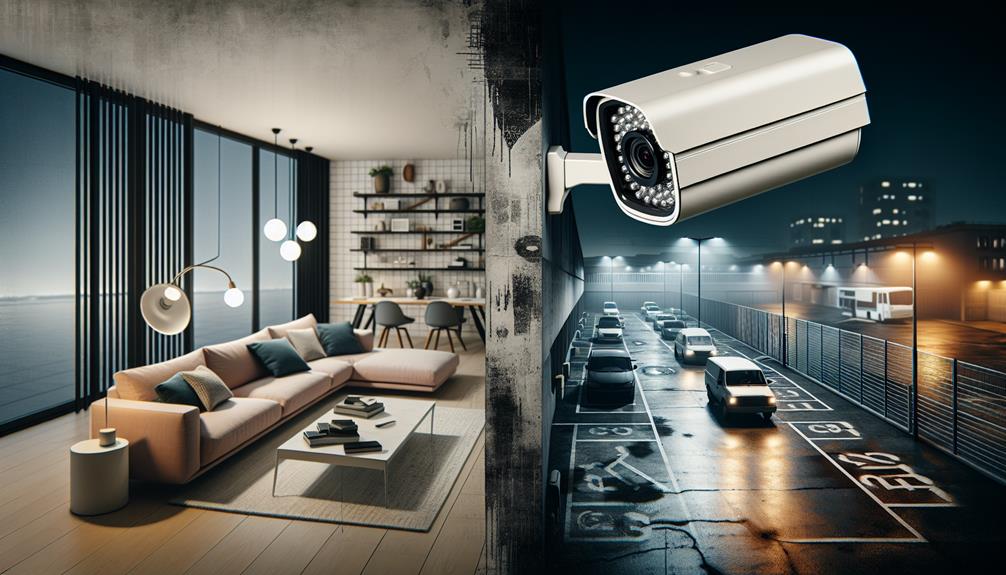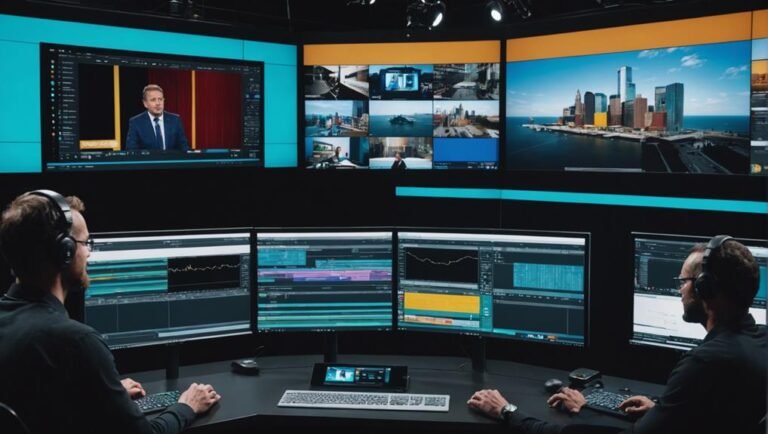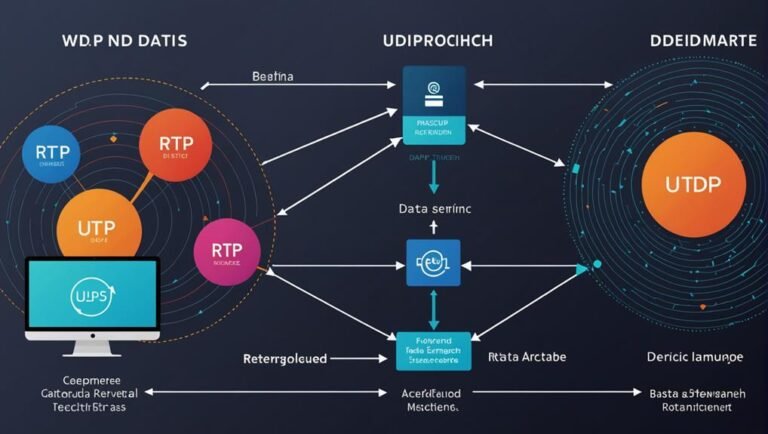When choosing between IP cameras and CCTV, you’ll find IP cameras offer higher image quality and flexibility. They connect over the internet, allowing remote access from smartphones and easier installation with fewer cables. CCTV systems use analog signals and coaxial cables, known for their reliability and simplicity. While IP cameras have higher initial costs, they save money long-term with advanced features and low maintenance. CCTV might seem cheaper upfront but comes with more installation expenses. Curious about how these systems stack up in detail? Stick around to see which one best suits your needs.
Technology Overview
In the domain of surveillance, understanding the technology behind IP cameras and CCTV systems is essential for making an informed decision. IP cameras operate over the internet, connecting directly to your network. They offer flexibility in installation since they don’t require extensive cabling. Just plug them into your existing network, and you’re good to go. You can even access the live feed remotely on your smartphone or computer, giving you the freedom to monitor your property from anywhere.
On the other hand, traditional CCTV systems rely on analog signals transmitted over coaxial cables to a central recording device. This means you’re often tethered by the physical limitations of the cables, which can restrict where you place the cameras. However, CCTV systems have been around for decades and are known for their reliability and simplicity.
IP cameras generally offer additional features like motion detection, alerts, and higher storage capacity through cloud services. CCTV systems might lack these advanced functionalities, but they’re straightforward and often more cost-effective in the short term. By understanding these technological differences, you can choose the system that best aligns with your need for both security and flexibility.
Image Quality
When it comes to image quality, IP cameras generally outperform CCTV systems, offering higher resolution and better clarity. If you crave freedom and flexibility, IP cameras empower you with HD or even 4K visuals, capturing crisp details that traditional analog CCTV just can’t match. Whether you’re monitoring your home, business, or any other space, the superior image quality of IP cameras guarantees you won’t miss a thing.
Imagine having the ability to zoom in on a license plate or a face without losing detail. IP cameras make this possible with their advanced digital zoom features. Unlike CCTV, which often provides grainy, low-resolution images, IP cameras deliver sharp, clear footage, even in low-light conditions. Their wide dynamic range (WDR) technology balances light and dark areas, making sure every detail is visible, regardless of the lighting situation.
Additionally, IP cameras offer better color accuracy and contrast, making your video feed vibrant and lifelike. You can easily identify objects and people, enhancing your security measures. With IP cameras, you’re not just watching a video feed; you’re seeing everything in high-definition detail, giving you the freedom to monitor your environment with unparalleled precision and confidence.
Installation Process
Unlike the straightforward plug-and-play nature of traditional CCTV systems, installing IP cameras requires careful planning and network configuration. You need to think about the placement, network bandwidth, and power supply. But don’t let that intimidate you; the freedom and flexibility you gain are worth it.
First, you’ll need to assess your network’s capability to handle the additional data load from multiple IP cameras. This means ensuring your router and switches can manage high data traffic without slowing down. Here’s a quick checklist to guide you:
- Network Bandwidth: Make sure your network can support the data load of all connected IP cameras simultaneously.
- Power Supply: Decide if you’ll use Power over Ethernet (PoE) to streamline the power and data connection in one cable.
- Camera Placement: Plan strategically to cover all critical areas and minimize blind spots.
Next, you’ll configure each camera’s IP address to integrate them into your existing network. This step involves logging into each camera’s interface and setting up the necessary parameters.
Once configured, you can easily monitor and manage your cameras remotely, offering you unparalleled control and oversight. The initial setup might be more complex, but the long-term benefits make it a liberating choice.
Cost Comparison
Comparing the costs between IP cameras and traditional CCTV systems reveals significant differences in initial investment and long-term expenses. If you’re looking for freedom from high upfront costs, CCTV systems might seem appealing at first. They usually come with lower initial prices for the cameras and basic recording equipment. However, don’t be fooled—these savings can quickly evaporate when you factor in installation costs, which often require professional help.
On the other hand, IP cameras typically have a higher initial price tag. Yet, they offer more bang for your buck in the long run. You won’t need to invest in as much cabling or specialized hardware, reducing installation expenses. Plus, IP cameras often come with advanced features like higher resolution and remote access, which can save you money on additional equipment.
Maintenance costs also differ. Traditional CCTV systems might require regular upkeep and potential rewiring, adding to your long-term costs. IP cameras, however, often come with software updates that enhance functionality without extra physical maintenance. So, while the initial cost might be higher for IP cameras, the long-term savings and added flexibility make them a smart investment for those who value both freedom and efficiency.
Connectivity Options
While cost is a major consideration, understanding the connectivity options for IP cameras and CCTV systems can greatly impact your decision. IP cameras offer a range of connectivity choices that can provide you with the freedom and flexibility to set up your surveillance system exactly how you want it. On the other hand, traditional CCTV systems usually rely on more rigid and less adaptable connectivity methods.
Here are three key connectivity options to take into account:
- Wired vs. Wireless: IP cameras can connect via Wi-Fi, giving you the flexibility to place them almost anywhere without worrying about running cables. CCTV systems typically require coaxial cables, limiting your installation options and making it harder to rearrange your setup.
- Network Integration: IP cameras easily integrate into your existing network, allowing for remote viewing and management through an internet connection. CCTV systems usually need a dedicated DVR (Digital Video Recorder) and are often more challenging to access remotely.
- Power over Ethernet (PoE): Many IP cameras support PoE, which lets you power the camera through the same cable used for data transmission. This simplifies installation and reduces the need for additional power outlets. Traditional CCTV systems generally don’t offer this convenience.
Choosing the right connectivity options can make a significant difference in how you control and utilize your surveillance system.
Security Features
Security features play a crucial role in determining the reliability and effectiveness of your surveillance system. When choosing between an IP camera and a CCTV setup, you’ll want to contemplate how each option safeguards your data and guarantees your privacy.
IP cameras offer advanced encryption to secure the video feed, making it nearly impossible for unauthorized users to access your footage. They can also support user authentication and access control, letting you decide who gets to see what. Additionally, IP cameras often come with firmware updates to patch vulnerabilities, maintaining your system secure over time.
On the other hand, traditional CCTV systems, which mainly use analog technology, don’t typically offer the same level of data encryption. This means they could be more vulnerable to signal interception. However, CCTV systems are often closed-loop, making it harder for external threats to penetrate if the physical security is robust.
You should also take into account the ease of integrating these systems with other security measures. IP cameras can easily sync with cybersecurity tools, enhancing your overall protection. CCTV might require additional hardware or steps to achieve similar security levels.
Ultimately, the choice hinges on your specific needs and how much control and security you’re aiming for in your surveillance setup. Choose wisely to protect your freedom and peace of mind.
Scalability
Scalability is an important factor to keep in mind if you’re planning to expand your surveillance system in the future. When it comes to growth, IP cameras offer a significant advantage over traditional CCTV systems. With IP cameras, you can easily add new cameras to an existing network without the need for complex wiring or expensive infrastructure changes.
Here are three key reasons why IP cameras are more scalable:
- Network-Based Integration: IP cameras leverage your existing network infrastructure, allowing for seamless integration. You can add more cameras simply by connecting them to the network, making expansion effortless and cost-effective.
- Higher Resolution: IP cameras often provide higher resolution options. This means you can cover more area with fewer cameras, reducing the need for additional devices as your surveillance needs grow.
- Advanced Features: IP cameras come with advanced features like remote access and intelligent analytics. These features make it easier to manage and monitor a growing number of cameras without needing a large team or extensive resources.
CCTV systems, on the other hand, often require significant investment in new cabling and hardware, which can limit your ability to scale quickly and affordably. For a system that grows with your needs, IP cameras clearly lead the way.
Frequently Asked Questions
How Does Weather Affect IP Cameras and CCTV Systems?
Weather impacts both by potentially causing water damage, lens fogging, and signal interference. It is important to guarantee that your cameras are weatherproof, with proper enclosures and maintenance, to keep them functioning smoothly even in harsh conditions.
Are IP Cameras or CCTV Better for Mobile Viewing?
You’ll find IP cameras better for mobile viewing. They use internet connections, so you can access live feeds from anywhere. Just grab your phone, and you’re in control, enjoying freedom and flexibility wherever you go.
Do IP Cameras or CCTV Systems Require More Maintenance?
You’ll find that IP cameras generally require less maintenance. Their updates and troubleshooting are more straightforward, often handled remotely. CCTV systems usually need more hands-on attention, involving physical inspections and manual upgrades. Choose the hassle-free route!
Can IP Cameras and CCTV Systems Be Integrated With Smart Home Devices?
You can easily integrate both options with smart home devices. You’ll enjoy the convenience and control they offer, enhancing your home’s security. Just verify compatibility and follow straightforward setups for a seamless experience.
Which System Offers Better Support for Night Vision?
Did you know 70% of break-ins happen at night? You’ll find that IP cameras typically offer better night vision due to advanced infrared technology. Don’t let the darkness restrict your freedom to feel secure.



